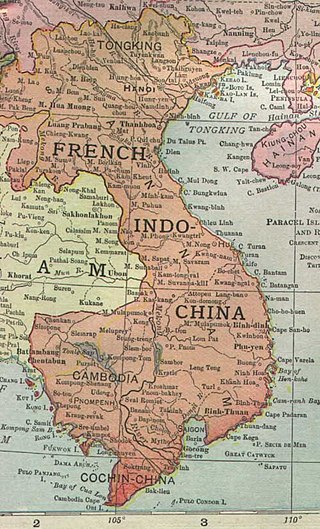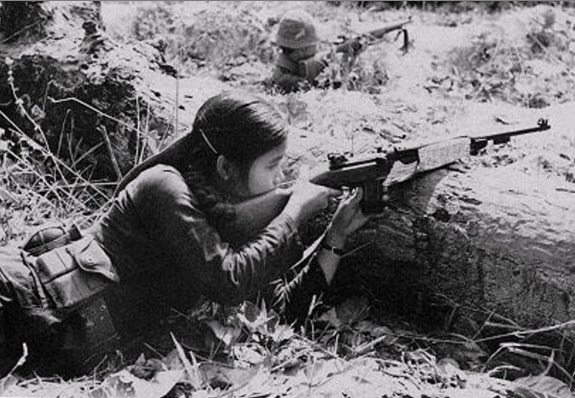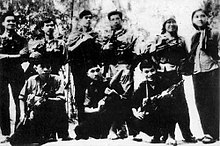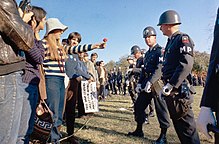Vietnam holds one of the oldest histories of any nation. The land has been inhabited by some of the world’s earliest societies.
It all started when the inhabitants of this area felt the need to control flooding along the Red River and fight off invaders. For this purpose, they formed one cohesive government early on in 2879 BC.
From the very beginning to till date, Vietnam has seen a lot. In this article, we will try to cover all the important events that helped shape Vietnam and its culture into what we see today. So, let’s dig a bit deeper.
Ancient Vietnam
About two millenniums ago, Vietnam started growing rice in the Red River Valley. To irrigate their crops in a better way, they built dikes and dug canals. Due to this, all the people of that particular land were forced to work side by side; hence an organized kingdom emerged called Van Lang.
However, the Chinese conquered the area in the 2nd century BC. They ruled northern Vietnam for over 1,000 years, which had a great impact on the culture of Vietnamese. On the other hand, there was Indian influence in South Vietnam. For more than five centuries (1st to 6th century AD), the southernmost part of Vietnam was part of a state called Funan.
An Indian-influenced state called Champa, situated in the middle of Vietnam, arose in the 2nd century AD. The North Vietnamese resented the Chinese rule. Hence in 40th AD, after bearing the cruelty, the Trung sisters led a rebellion. This caused them to form an independent state. However, time wasn’t in their favor, and the Chinese crushed the rebellion in 43rd AD. Due to this, the sisters killed themselves.
Despite the time of rebellion, the Chinese continued to rule North Vietnam until the 10th century. Finally, a leader arose in 938 named Ngo Quyen, and he defeated the Chinese at the battle of Bach Dang River. This resulted in North Vietnam becoming an independent state.
In the 13th century, Mongols invaded Vietnam for three times. They captured the capital for two times (in 1257 and 1284), but each time they withdrew quickly because of all the resistance they faced by the Vietnamese. In 1288, the Vietnamese leader Tran Hung Dao fought to put an end to all this, and he was successful in routing the Mongols at the Bach Dang River.
However, the Chinese again tried their luck to regain control of North Vietnam in the early 15th century. Although China was able to occupy the country in 1407, their rule was resisted, and the Vietnamese wanted to get rid of them. For this purpose, Le Loi began the Lam Son Uprising in 1418.
After ten years, in 1428, Chinese were driven out, and Le Loi became the Emperor Le Thai To. Under his reign, the central Vietnamese state of Champa became a vassal state of North Vietnam.
However, in the early 1500s, the power of the Le dynasty declined. During the 17th and 18th centuries, two families, who were against each other, effectively held power. The first family, the Trinh, started ruling in the north while the Nguyen in the south. The Nguyen family went on to conquering the Mekong Delta from the Khmer Empire.
In the 1770s, the town of Tay Son saw a rebellion, which was led by three brothers called Nguyen. Eventually, they captured the south territory from the Nguyen Lords and the north territory from the Trinh lords.
By the year 1786, the three controlled the whole of Vietnam. One brother among them, Nguyen Hue, declared himself Emperor Quang Trung.
In 1788, the Chinese tried to Intervene again in Vietnam but were routed by the Vietnamese at Dong Da.
A Nguyen lord named Nguyen Anh escaped in 1788 during all this. He went on to raise an army, and by 1789, he successfully pushed back the rebels. Anh captured Hanoi in 1802 and declared himself Emperor Gia Long. Under his rule, Vietnam became a strong united kingdom.
French Colonialism
The first French to Enter in Vietnam were missionaries who took part in the Politics of the country. The Vietnamese emperors executed some of the more troublesome Frenchmen, which promoted Napoleon the third to send troops in Vietnam.
The troops attacked in 1858 and went on to establish the colony of Cochinchina in the south of Vietnam. They made Saigon the capital of Cochinchina.
The French never stopped there; they moved ahead and gradually eroded the power of the Vietnamese emperors further north.
In 1887, the colony of Cochinchina became French Indochina. Similarly, central Vietnam became Cambodia and northern Vietnam became Laos.
According to the French, they were ruling Indochina to bring into light the liberty of races and end slavery. However, the reality was quite the opposite. They wanted to fuel French industrialization by treating Vietnam as a huge plantation.
Thousands of Vietnamese died on rubber plantations in appalling conditions due to laboring. Their condition was so poor because rice was exported while the locals were starving to death.
Rebels revolted time to time, but they were not much organized enough to succeed against the power of French security systems.
During this time, the French-built several infrastructures in Vietnam, such as the Saigon to Hanoi railway. In addition to that, they also built roads and bridges to facilitate transportation. However, the buildings were funded by heavy taxation. Ultimately, the people of Vietnam wanted independence from the French.
The Communists struggled a lot for independence. Ho Chi Minh created the Revolutionary Youth League in 1925. After five years, the league became the Vietnamese Communist party or Viet Minh.
In 1940, when the Germans defeated France, Japan decided to take advantage of their weak position. The Japanese forced the French government to permit the Japanese troops to occupy French Indo-China. However, the Japanese still left the French administration in place.
The Vietnamese Communist party fought Japanese, and by the year 1945, they controlled parts of North Vietnam.
In March of 1945, the Japanese took total control of the Vietnamese administration. However, they were dismissed from the power when Japan surrendered on 15 August 1945. Due to their sudden dismissal, there was a massive power vacuum, which was quickly filled by Ho Chi Minh.
The next month, on 2 September 1945, Ho Chi Minh finally declared Vietnam an independent country. However, the superpowers ignored accepting the fact that Vietnam is independent, and they also ignored their demand for independence.
Under the terms of the Potsdam Conference, the Japanese troops who were in the south of the 16th parallel, surrendered to the British. On the other hand, the troops who were to the north, surrendered to the Nationalist Chinese.
Seeing the position empty, the French army arrived in the south to take control from the British. While in the north, the Chinese troops moved in to take power. However, Ho Chi Minh knew that the French are the lesser of two devils; hence he signed a treaty. According to that treaty, French troops were to replace Chinese troops in North Vietnam and take control for the next five years.
In return, the French promised Ho Chi Minh that Vietnam would be recognized as a free state. But soon, it became clear that the French weren’t going anywhere and had no intention of giving up power in Vietnam. Therefore, fighting broke out between them and the Communist Party (aka Viet Minh). For almost eight years, the French and the Viet Minh fought a guerilla war.
Finally, the party surrounded a French army at Dien Bien Phu in 1954. The siege lasted for about 54 days, and the French were forced to do nothing but surrender because they had no way out. After this, it was made clear to the French that they couldn’t win the war anymore. Therefore, they both met at the Geneva Conference to end the guerilla war.
Both parties agreed that Vietnam would be temporarily divided at the 17th parallel, and elections would be held on 20 July 1956. However, the elections never took place, and the division of Vietnam became a permanent thing.
Partition
Vietnam was divided in two:
- Communist North led by Ho Chi Minh
- The South led by Ngo Dinh Diem, a maverick Catholic.
According to one of the memoirs of President Eisenhower, if the 1956 elections were to be held, 80 percent of the population would have voted for Ho Chi Minh – means direct victory! This was the reason why elections were ruled out by the US as they wanted to bolster up the Diem regime in South Vietnam. Diem tortured and executed many of thousands of Viet Minh supporters.
However, the Communist Party didn’t respond until 1960, when a new patriotic movement gathered all the opponents of Diem from South Vietnam. This movement marked the beginning of a new war.
The American War
Under the presidency of President Kennedy, the involvement of the USA increased. US military advisers continued to combat and bomb Vietnam. In 1963, Diem along with his brother, Nhu, launched brutal repression of Buddhists, which caused one of the monk protestors to set himself on fire.
A coup by dissatisfied generals, backed by the USA, was put in place that assassinated both Diem and Nhu. The conflict escalated, and North Vietnam sent its own troops secretly into the South, which followed the Ho Chi Minh Trail through the mountains.
In 1965, President Johnson started the constant bombing of North Vietnam. And the first marines arrived in Danang. By the end of 65’, 200,000 US soldiers entered in Vietnam; by the end of 1966, there were already 400,000 personnel there.
However, it was not actually a war that the US expected. The guerillas would strike on the US troops and then disappear into a wide underground channel of tunnels or otherwise, into the local community. Instead of showing their full firepower, the US soldiers were always patrolling and wondering when and where the next mine or booby trap would harm them. Due to this cat and dog fight, almost 25,000 civilians were already killed, and 50,000 more were being injured every year.
War and Peace
On the day of Tet or the Vietnamese New Year, in 1968, North Vietnam launched a major offensive in order to liberate South Vietnam before ill Ho Chi Minh died. However, it failed (in the short term). The local population didn’t rise in support, and the rebels had to face devastating losses. The US public was shocked after seeing the TV coverage of this frightening incident as they were told that everything is under control.
Instead, they got to see the Communist flag raised over Huê and an attack on the US Embassy in Saigon. Gradually, the US anti-war movement began, and the will to fight started to decrease.
The new US President, Richard Nixon came to power and spread the war into Cambodia. Hence, the Khmer Rouge ultimately came to power. However, the US also started disengaging from Vietnam. The US forces in Vietnam were slowly diminished, and a peace agreement was eventually signed on 27 January 1973.
Although the Americans withdrew within 60 days, both Vietnamese armies of North and South carried on fighting. The withdrawal of the US from Vietnam destroyed South Vietnam’s economy. North Vietnam took advantage of it and launched another major offensive on 10 March 1975. This offensive helped in routing their demoralized opponents. Hence, Saigon was liberated, and Vietnam got reunited on 30 April 1975.
Modern Vietnam
Finally, Vietnam was reunited under Communist rule. But the fights didn’t just stop there as the Khmer Rouge made attacks on Vietnam in the late 1970s. In 1978, Vietnam took control of Cambodia and stayed there until 1989.
Over time, the Vietnamese economy began to boost when the Vietnamese government introduced market reforms in 1986. The economic situation got much better when the USA lifted an economic embargo on Vietnam in the year 1994. Also, in 1995, both nations’ diplomatic relations were restored.
Today, the economy of Vietnam is booming, and the country is becoming more and more prosperous. It has several amazing spots that the tourists love to see and explore, hence tourism is one of the major industries in Vietnam.
In addition to that, a foreign exchange opened in Vietnam in 2000 that helped boost the country’s economy.
Today, the population of Vietnam is more than 95 million (as of 2018). A lot of events took place, and many of them headed south, which altogether helped Vietnam become the country that it is today.





